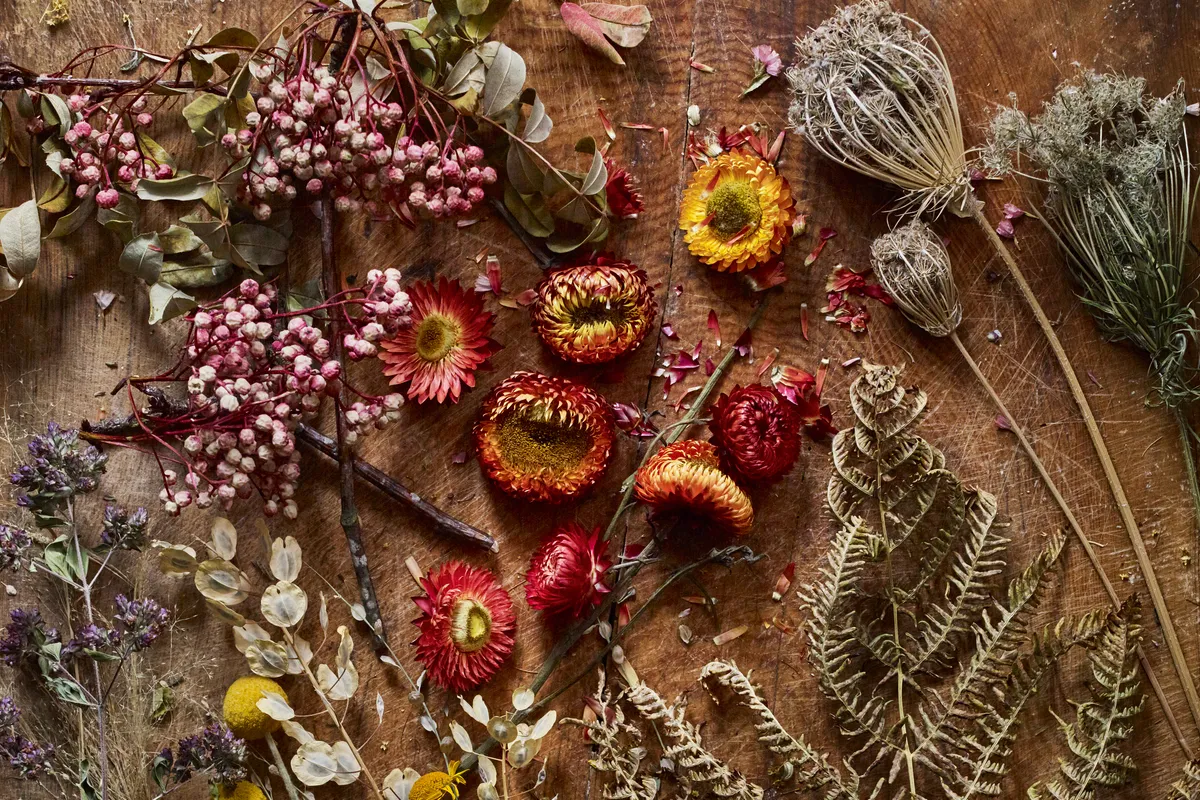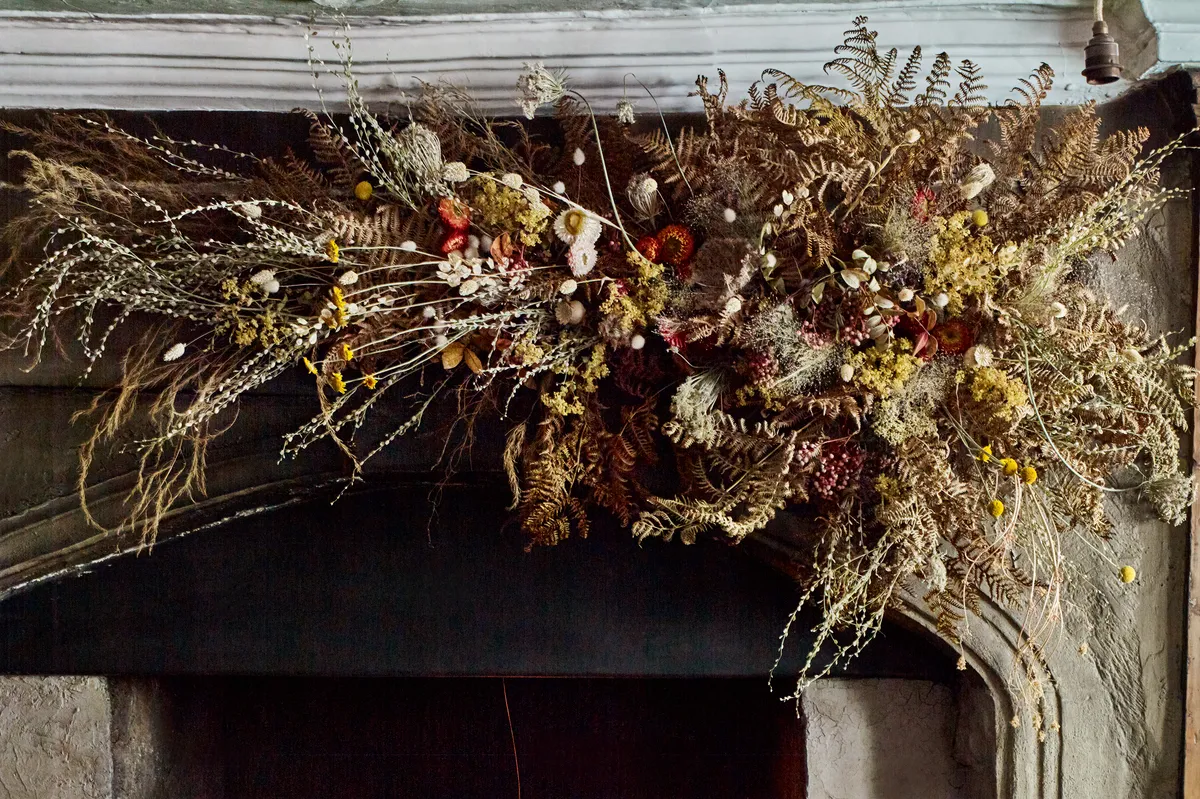Planning midwinter in midsummer sounds like complete insanity, but as soon as the longest day dawns, our thoughts turn to the shortest, and we begin cutting our flowers, grasses and herbs for drying. Breadth and variety is what we want, so things that others would compost we might end up using.
We cut when fine weather is forecast, bunch up the stems in groups of 20 and hang them upside-down in the potting shed to air dry, and we keep cutting right the way through to early winter. An ingredients list for one of our wreaths or table centrepieces is as likely to include more traditional things such as opium poppy seedheads, ornamental grasses and ruby-coloured strawflowers, as it is dried bracken, shepherd’s purse and gone-to-seed land cress, which we discovered by neglect has a ethereal airy seedhead that dries beautifully.

The ‘cloud’ uses a mix of foraged and grown plants including Sorbus hupehensis ‘Pink Pagoda’, Xerochrysum bracteatum Monstrosum Series, Daucus carota ‘Dara’
and Ammi majus seedheads, Craspedia globosa, Phalaris canariensis, Alchemilla mollis and moorland bracken.
All our ideas come from what is growing around us, either in the walled garden or on the moors, woods and fields near our home. Plants change on a weekly basis and we constantly scrutinise them to see at what stage they are interesting enough to cut. For example, moorland bracken, which in summer is dark green, turns golden bronze and ochre in mid-October. We use this as a filigreed base for much of our winter work, as it holds its shape while slowly twisting into complex three-dimensional shapes as it dries. For our bases, we don’t use floral foam as it is non-biodegradable, contains micro-plastics and contains harmful chemicals. We use chicken wire and moss instead.
Remember to subscribe to Gardens Illustrated for more inspirational content.
Making a mantelpiece decoration using dried florals
This can be created wherever you have space: above a fireplace, on a wall or strung from a ceiling. The cloud is made of chicken wire twisted into the desired shape and then suspended so that it appears to float. Dried ingredients are then built up in layers so that none of the wire can be seen.
You will need
• A small amount of chicken wire. This mantelpiece cloud is approximately 75cm x 75cm.
• Bulky dried material, such as bracken, to cover the wire structure, but you could also use dried asparagus fern, sprigs of native trees with winter leaves and cones, such as oak, beech and larch, or evergreen material if you want something more traditional.
• More textured and coloured accents of dried flowers, grasses and berries for the eye-catching details.

The white flowerheads of Lagurus ovatus and yellow bobble heads of Craspedia globosa light up this mix of flowers, grasses and bracken. Despite its extravagance, it
is light enough to hang on three or four small tacks.
Watch Roisin and Caroline make the mantelpiece decoration
How to make
1. Choose the place where the cloud is to go, and then tap tacks in the wall or mantelpiece – three or four are usually enough – so that it can be suspended.
2. Cut a length of chicken wire with pliers and then manipulate it into the desired shape, making sure it fits the space. The more contorted the shape, the better, as it creates
a ‘nest’ that holds the stems firmly. Take care and wear gloves, as the wire ends are sharp.
3. Taking the basic shape, work out how large you want it, bearing in mind that once it is filled with foliage, it will be twice as big.
4. Before you begin building up the layers of dried material, attach the suspending wires. This is because once you have everything in place, it is very hard to see where to attach them. We have learned this the hard way.
5. Start building up the base of dried material by poking the stems into the twisted chicken wire, securing them with wire where necessary. We begin with dried bracken, not just because we like its lacy texture, but because it hides the wire without looking too blocky and dense. It is important to keep holding up the ‘cloud’, standing back and seeing how it looks from a distance. You can also see where the gaps are and the chicken wire is still visible.
6. Once you have achieved the shape and fullness that you like, you should then secure it in place and finish off the details of berries, dried seedheads and dried flowers in situ.